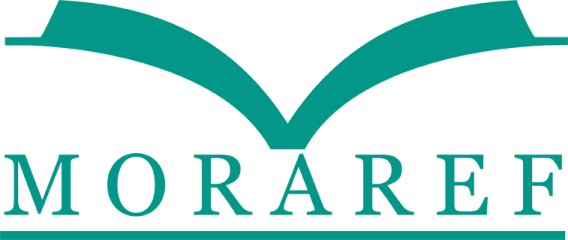Analysis of Factors Affecting Prices Indonesian Gold Spot With ARDL Model
Keywords:
Gold price, Inflation, Exchange rate,, ARDL model, Time series, Cointegration, IndonesiaAbstract
This study examines the impact of macroeconomic variables—namely inflation and exchange rates—on Indonesian gold spot prices from 1995 to 2018, employing the Autoregressive Distributed Lag (ARDL) model. The study seeks to comprehend the short-term and long-term correlations among these variables. Time series data were obtained from the Indonesian Central Statistics Agency, Index Mundi, and the Gold Price Chart. The findings indicate that, in the near term, inflation negatively and significantly affects gold prices, however, in the long term, it positively and significantly influences them. Likewise, the exchange rate exerts a substantial and adverse impact in both the short and long run, suggesting that a stronger Rupiah generally elevates gold prices. The ARDL model validates the existence of a cointegrated relationship among the variables, corroborated by the limits testing methodology. Diagnostic assessments confirm the stability and reliability of the calculated model. These findings indicate that the regulation of inflation and exchange rates is essential for maintaining gold price stability in Indonesia.
Downloads
References
Ali, S., Naveed, M., Hanif, H., & Gubareva, M. (2024). The resilience of Shariah-compliant investments: Probing the static and dynamic connectedness between gold-backed cryptocurrencies and GCC equity markets. International Review of Financial Analysis, 91, 103045. https://doi.org/10.1016/J.IRFA.2023.103045
Chiang, T. C. (2022). The effects of economic uncertainty, geopolitical risk and pandemic upheaval on gold prices. Resources Policy, 76, 102546. https://doi.org/10.1016/J.RESOURPOL.2021.102546
Ding, Q., Huang, J., Gao, W., & Zhang, H. (2022). Does political risk matter for gold market fluctuations? A structural VAR analysis. Research in International Business and Finance, 60, 101618. https://doi.org/10.1016/J.RIBAF.2022.101618
FADHILLAH, D. N. (2017). PENGARUH DIVIDEND OMISSIONS TERHADAP RISIKO INVESTASIDAN PROFITABILITAS. Jurnal Akuntansi AKUNESA, 6(1). https://ejournal.unesa.ac.id/index.php/jurnal-akuntansi/article/view/23019
Fevereiro, J. B. R. T., Genovese, A., Purvis, B., Codina, O. V., & Passarella, M. V. (2025). Macroeconomic models for assessing the transition towards a circular economy: A systematic review. Ecological Economics, 236, 108669. https://doi.org/10.1016/J.ECOLECON.2025.108669
Gulseven, O., & Ekici, O. (2021). The role of real estate and gold as inflation hedges: the Islamic influence. International Journal of Islamic and Middle Eastern Finance and Management, 14(2), 391–408. https://doi.org/10.1108/IMEFM-01-2019-0038/FULL/XML
Hoque, M. E., Billah, M., Alam, M. R., & Tiwari, A. K. (2024). Gold-backed cryptocurrencies: A hedging tool against categorical and regional financial stress. Global Finance Journal, 60, 100964. https://doi.org/10.1016/J.GFJ.2024.100964
Jain, M., & Jaiswal, S. (2023). Dynamics of Gold in the Contemporary Era. Vision, 27(1), 7–10. https://doi.org/10.1177/09722629211004296/ASSET/B4F1286A-840B-430D-82B0-4645EE3E2967/ASSETS/IMAGES/LARGE/10.1177_09722629211004296-FIG2.JPG
Jin, S., Ma, T., & Tan, X. (2024). Digital financial inclusion and household energy poverty: Evidence from China. Economic Analysis and Policy, 83, 436–456. https://doi.org/10.1016/J.EAP.2024.06.023
Kamel, A. R., & Abonazel, M. R. (2023). A Simple Introduction to Regression Modeling using R. Computational Journal of Mathematical and Statistical Sciences, 2(1), 52–79. https://doi.org/10.21608/CJMSS.2023.189834.1002
Li, B., Chen, Y., Wu, H., & Mao, X. (2025). Macroeconomics, geopolitical risk, and resource commodity price bubbles. Resources Policy, 101, 105478. https://doi.org/10.1016/J.RESOURPOL.2025.105478
Li, J., Wang, R., Aizhan, D., & Karimzade, M. (2023). Assessing the impacts of Covid-19 on stock exchange, gold prices, and financial markets: Fresh evidences from econometric analysis. Resources Policy, 83, 103617. https://doi.org/10.1016/J.RESOURPOL.2023.103617
Madani, M. A., & Ftiti, Z. (2022). Is gold a hedge or safe haven against oil and currency market movements? A revisit using multifractal approach. Annals of Operations Research, 313(1), 367–400. https://doi.org/10.1007/S10479-021-04288-6/FIGURES/5
Prawoto, N., & Basuki, A. T. (2022). Factors Affecting Poverty in Indonesia: A Panel Data Approach. Quality - Access to Success, 23(186), 156. https://doi.org/10.47750/QAS/23.186.20
Sahoo, S. (2024). Harmony in diversity: Exploring connectedness and portfolio strategies among crude oil, gold, traditional and sustainable index. Resources Policy, 97, 105281. https://doi.org/10.1016/J.RESOURPOL.2024.105281
Viner, J. (2024). INTERNATIONAL ASPECTS OF THEGOLD STANDARD. Business Cycle Theory: Selected Texts, 1860-1939: Volume III, 3, 293–329. https://doi.org/10.4324/9781003549765-12/INTERNATIONAL-ASPECTS-GOLD-STANDARD-JACOB-VINER
Wang, K. M., & Lee, Y. M. (2022). Is gold a safe haven for exchange rate risks? An empirical study of major currency countries. Journal of Multinational Financial Management, 63, 100705. https://doi.org/10.1016/J.MULFIN.2021.100705
Weber, I. M., Wasner, E., Lang, M., Braun, B., & van ’t Klooster, J. (2025). Implicit coordination in sellers’ inflation: How cost shocks facilitate price hikes. Structural Change and Economic Dynamics, 74, 690–712. https://doi.org/10.1016/J.STRUECO.2025.04.005
Y?lmaz, E., & Bulut, N. (2025). Inflation dynamics: Profits, wages and import prices. Economic Systems, 101310. https://doi.org/10.1016/J.ECOSYS.2025.101310
Downloads
Published
How to Cite
Issue
Section
License
Copyright (c) 2025 sasrinawati sasrinawati, Ratna, Fanny Nailufar, Ichsan Ichsan

This work is licensed under a Creative Commons Attribution 4.0 International License.


























